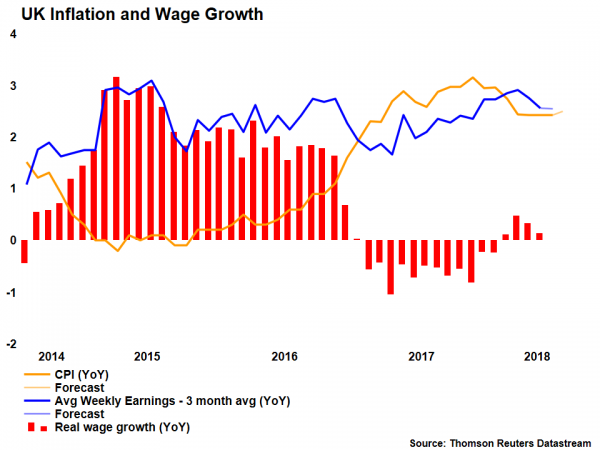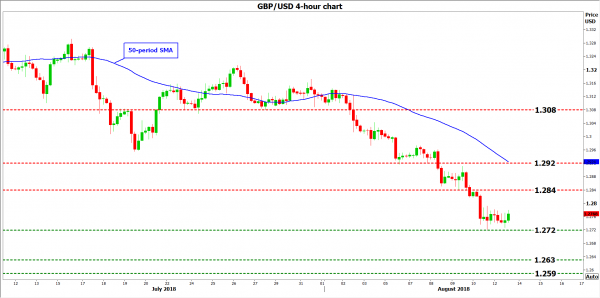This week will bring a raft of key data points out of the UK, including employment, inflation, and retail sales releases. Forecasts point to figures that are likely to confirm the UK economy remains on a solid footing. While a set of decent prints could help trigger a relief bounce in sterling, any rallies in the currency may remain relatively short-lived, at least until there are some signs of progress in the Brexit talks – which are set to resume on Thursday.
The UK will be on the receiving end of several key economic data this week. Employment figures for June will hit the markets on Tuesday, before CPI inflation prints for July are released on Wednesday, ahead of retail sales numbers for the same month on Thursday – all due out at 0830 GMT on their respective days. After the data releases, market attention will likely turn back to the Brexit negotiations.
Kicking off with the jobs prints, the unemployment rate is projected to remain unchanged at the four-decade low of 4.2%, while average weekly earnings are expected to have risen at the same pace as in the previous month on a yearly basis, both including and excluding bonuses. Specifically, by 2.5% year-on-year including bonuses, and by 2.7% excluding bonus payments.
Turning to the inflation numbers, the UK CPI rate is anticipated to have ticked up to 2.5% in yearly terms from 2.4% previously, while the core rate that excludes volatile food and energy items is expected to have held steady at 1.9%, just a hair away from the Bank of England’s (BoE) 2% inflation target. Hence, the anticipated pickup in the headline CPI print appears to be owed mainly to movements in oil prices, which the BoE typically “looks through” as being transitory effects that will fade soon.
Then on Thursday, the nation’s retail sales are forecast to have rebounded to 0.2% in monthly terms, following a 0.5% drop previously. Similarly, the core rate that strips out automobiles and fuel is anticipated to have risen by 0.1%, after falling by 0.6% in the previous month. That said, trackers of retail sales were not particularly encouraging, with the BRC gauge slowing and the CBI distributive trades index declining in July. Consumer spending figures from credit card company Visa were soft as well.
As for the British pound, it has been under severe pressure lately, trading at one-year lows against both the dollar and the yen amid concerns that a no-deal Brexit is becoming increasingly more realistic. The cautious tone by the BoE at its latest policy gathering didn’t do the currency any favors either, dampening expectations for more rate increases in the foreseeable future. Market pricing suggests investors only see an 80% probability for the Bank to raise rates again by December 2019, according to the UK OIS.
While an upbeat set of data this week may bring forward market expectations for a potential BoE rate increase and hence trigger a relief bounce in sterling, one remains hesitant to trust any sustained advances in the currency with the Brexit talks currently at such an uncertain juncture. In other words, until some progress in the EU-UK negotiations is evident, any potential rallies in sterling owed to upbeat data may remain relatively short-lived. The next round of Brexit talks is scheduled to begin on Thursday, 16 August. Any relevant headlines could be critical for the pound’s forthcoming direction, especially after the “data risk” is out of the way.
Taking a technical look at sterling/dollar, in case of a rebound immediate resistance to advances may be found near the 1.2840 hurdle, defined by the lows of August 9. Even higher, the 1.2920 area marked by the August 7 lows could attract attention, before the 1.3080 barrier comes into view.
Conversely, in case of further declines, preliminary support may come around the pair’s 14-month low of 1.2720. A downside break could pave the way for the 1.2635 zone initially, identified by the June 12, 2017 lows. Even lower, buy orders may be found near 1.2590, the pair’s trough from June 21, 2017.
















